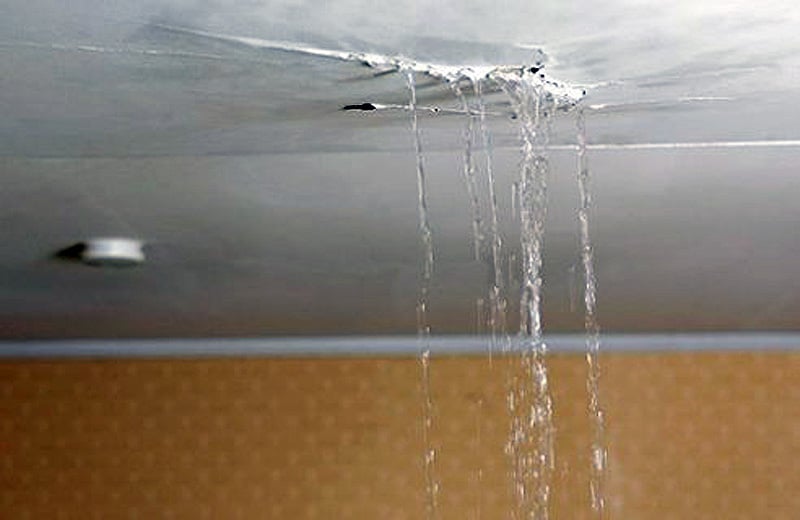Pinpoint the Top Factors for Leak Problems in Your Residence
Pinpoint the Top Factors for Leak Problems in Your Residence
Blog Article
Just about everyone is bound to have their own unique idea when it comes to How to detect water leaks in your home.

Leakages not just create waste of water but can additionally trigger unneeded damage to your residence as well as advertise unwanted natural development. By understanding and also looking for everyday circumstances that create leaks, you can secure your residence from future leaks as well as unneeded damage.
Immediate temperature level changes.
Severe temperature changes in our pipelines can create them to broaden and get all of a sudden. This growth and tightening may create fractures in the pipes, specifically if the temperature are listed below freezing.
Rusty water systems
This might be the reason of staining or warping on your water pipes. If our plumbing system is old, consider changing the pipelines because they are at a greater threat of rust than the newer models.
Faulty Pipeline Joints
The factor at which your pipes connect is frequently the weakest link in the waterline. Pipeline joints can weaken with time, leading to water leaks. The bulk of pipe joints are not conveniently noticeable. If you have noisy pipelines that make ticking or banging sounds, particularly when the hot water is activated, your pipeline joints are possibly under a lot of stress. It is a good idea to have your plumber examine your system annually.
Encroaching roots
Most water leakages begin outside your home rather than inside it. If you notice an unexpected decline in water pressure, say in your faucet, require time to go out and also examine your lawn. You may observe wet patches or sinkholes in your yard, which could mean that tree roots are attacking water lines creating water to seep out. You can have your plumber check for invasion, particularly if you have trees or hedges near your residential property.
Poor Water Connectors
At times, a leakage can be caused by loose hose pipes as well as pipes that supply your devices. In case of a water connections leak, you may observe water running straight from the supply line or pools around your devices.
Blocked Drains
Blocked drains pipes might be frustrating as well as inconveniencing, but they can occasionally end up triggering an overflow resulting in break pipes. Keep getting rid of any materials that may decrease your drains that might block them to prevent such troubles.
All the above are sources of leaks yet not all water leakages arise from plumbing leakages; some leaks may come from roof leakages. All leaks ought to be fixed right away to avoid water damages.
Leakages not only create waste of water however can also create unnecessary damages to your house as well as advertise unwanted natural development. By looking and comprehending for daily circumstances that cause leakages, you can shield your home from future leakages and also unnecessary damage. Today, we will certainly look at 6 leak triggers that may be triggering your pipelines to leak.
At times, a leakage can be created by loosened pipes and also pipelines that provide your home appliances. In situation of a water connections leak, you might see water running directly from the supply line or pools around your appliances.
How To Check For Water Leak In Your Home
How To Check for Leaks
The average household's leaks can account for nearly 10,000 gallons of water wasted every year and ten percent of homes have leaks that waste 90 gallons or more per day. Common types of leaks found in the home are worn toilet flappers, dripping faucets, and other leaking valves. These types of leaks are often easy to fix, requiring only a few tools and hardware that can pay for themselves in water savings. Fixing easily corrected household water leaks can save homeowners about 10 percent on their water bills.
To check for leaks in your home, you first need to determine whether you're wasting water and then identify the source of the leak. Here are some tips for finding leaks:
Take a look at your water usage during a colder month, such as January or February. If a family of four exceeds 12,000 gallons per month, there are serious leaks.
Check your water meter before and after a two-hour period when no water is being used. If the meter changes at all, you probably have a leak.
Identify toilet leaks by placing a drop of food coloring in the toilet tank. If any color shows up in the bowl after 10 minutes, you have a leak. (Be sure to flush immediately after the experiment to avoid staining the tank.)
Examine faucet gaskets and pipe fittings for any water on the outside of the pipe to check for surface leaks.
Undetected water leaks can happen without the home or business owner even realizing. If you suspect a water leak, but not able to find the source. It is time to contact a professional water leak detection service, The Leak Doctor.
How To Find a Water Leak In Your Home
https://www.leakdoctor.com/blog/How-To-Check-For-Water-Leak-In-Your-Home_AE197.html

We were introduced to that write-up on Common Water Leaks In House through an acquaintance on our other web property. Enjoyed reading our write-up? Please share it. Let somebody else find it. Thanks for going through it.
Save time, dial! Report this page